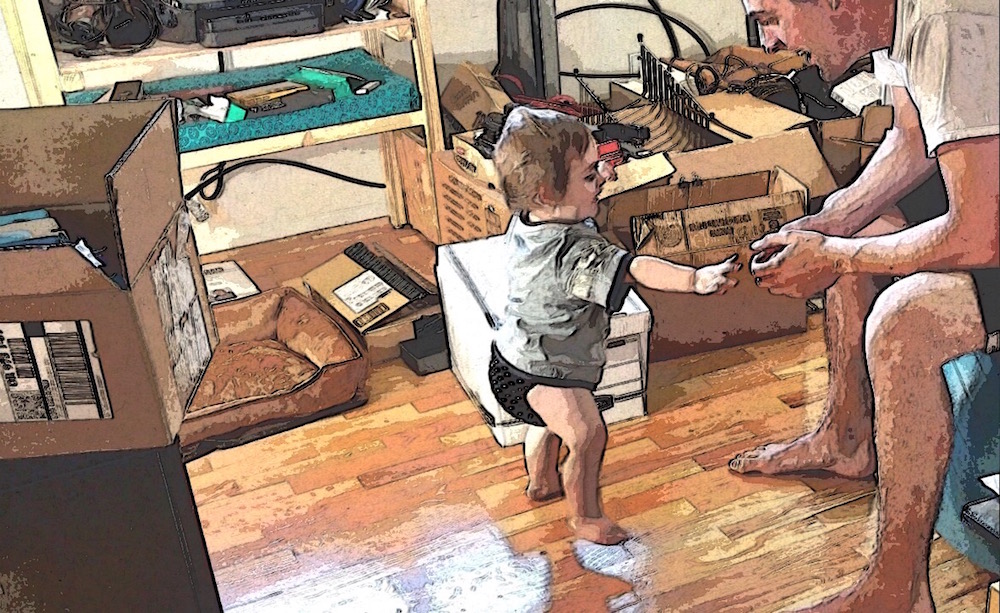Kids are interesting beasts. One minute they lack a certain skill, and the next, they suddenly possess the skill.
For example, last week my daughter could not walk. She could stand on her own. She could pick up items and inspect them while standing. But when it came to traveling, she would plop down on all fours. She didn’t really show an interest in walking either.
Then without warning, while hanging out in the bedroom, she stood up and took a couple baby steps like it was no big deal.
My wife and I, naturally, flipped out and celebrated the momentous occasion. Only after she observed our reaction did she realize she accomplished something special. And before we can snap our fingers, she’ll be running and jumping all over the place.
Real Estate Baby Steps
Investing is real estate is the same way. When you see someone who owns multiple properties, has a solid system for screening tenants, and is genuinely running their business well… It can seem overwhelming, scary, or impossible to imagine yourself doing anything like that. I get that, but here’s the deal: that person started out with zero properties. Then bought one. Then another. During that time they took baby steps themselves to build their business.
You can do it too. Here are some baby steps you can take to get started.
Baby Step: Saving a Downpayment
The first step is to make sure you have the funds for a down payment. This is an easy baby step: open up a separate savings account and start automatic monthly transfers. Start with $100 and then find ways to cut expenses and increase that number. Once you have enough for a downpayment, move on to the next baby step. As a bonus, talk to a lender and find out how much money you’re qualified to borrow.
Baby Step: Looking at Property
Walking through property is a ton of fun. There’s zero commitment and you can be free to criticize things you don’t like and/or image what it could be with some work. Before we bought our first property, we looked at 100 places (Yes, we’re still friends with the agent). After a while, we got a solid feeling for the average property and it’s value. If you look for open houses, you don’t even need to get an agent involved.
Baby Step: Evaluating Property
People tend to overcomplicate this step. When getting started, there are really only 3 steps to evaluating a property:
- What repairs need to be done to bring the rental up to a minimum standard? What improvements can you do to increase the rent? In addition to the downpayment, do you have enough money to do these? Could you wait a year or two to do them?
- What type of people would this property attract? Would they pay the rent you want to charge? Here’s how to determine how much to charge for rent.
- What does the cashflow of the property look like? Start with the income (pretend it’s vacant 1 month every year). Then subtract the utilities you’ll pay for (you can call and ask each company). Subtract your mortgage payment (use any online calculator). Subtract 10% of your income for continued repairs. If the number is positive, that’s a good thing.
As you grow, you’ll want more sophisticated ways to evaluate properties, but these fundamentals will stay the same.
Baby Step: Making an Offer
If you have the money, and the property showed positive cash flow in step #3, this baby step is easy. An agent will make sure you fill out the paperwork correctly and walk you through the whole purchase process.
Baby Step: Finding and Screening Your First Tenant
Here’s the secret to successful real estate investing: find responsible tenants. Responsible tenants 1) pay their rent on time and in full each month, 2) take care of the rental, and 3) communicate regularly with you. Use the S.O.L.I.D. Screening Method to identify responsible tenants. It’s a systematic screening method that keeps you objective and lawful. It also utilizes interesting questions to help you discern who is responsible.
I know people who went from feeling overwhelmed about the whole screening process to feeling confident. Plus, they now have a tenant they know is responsible.
Baby Step: Tracking Your Income & Expenses
When I started out, I made this step super complicated. Instead, here’s the minimum: open a separate checking account. Put your rent there. Pay all your expenses from there. If you have an expense, keep the receipt. I personally scan all of mine, but a folder will work just as well. For taxes, look at your Jan 1 balance. Then look at your Dec 31 balance. Subtract any money you put into the account during the year. That’s how much you made.
As you grow, you’ll want something more sophisticated, but that’s a future baby step.
One Step at a Time
Hopefully you can see that getting started is simply series of baby steps. None of them on their own is scary or too big. You can break the baby steps down further if you want: for example, each repair is it’s own step. Just like my daughter, you can take one step at a time, at your own pace.

